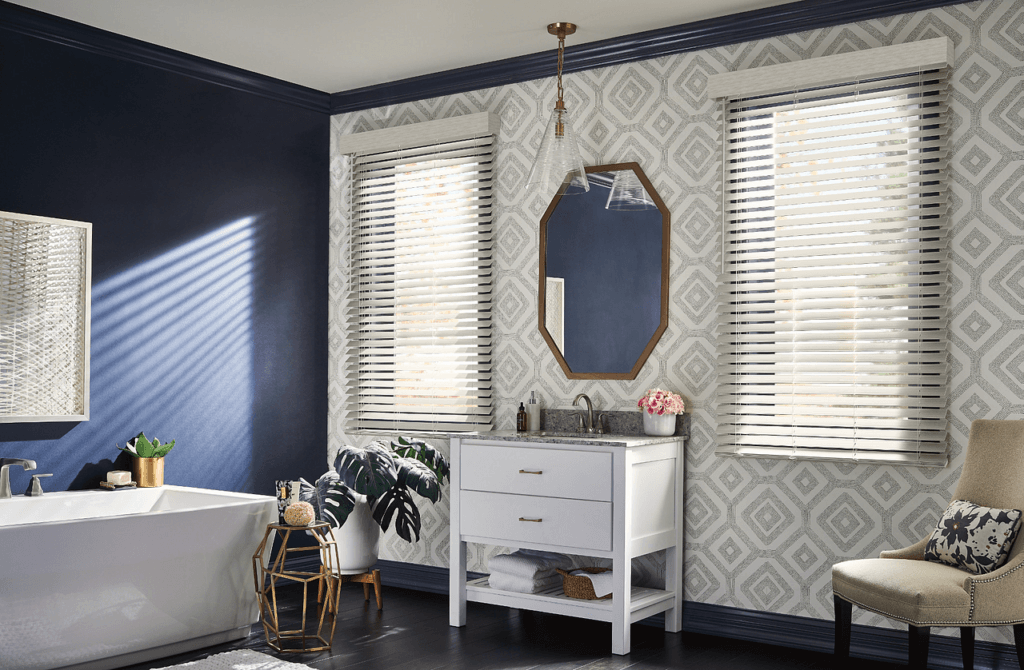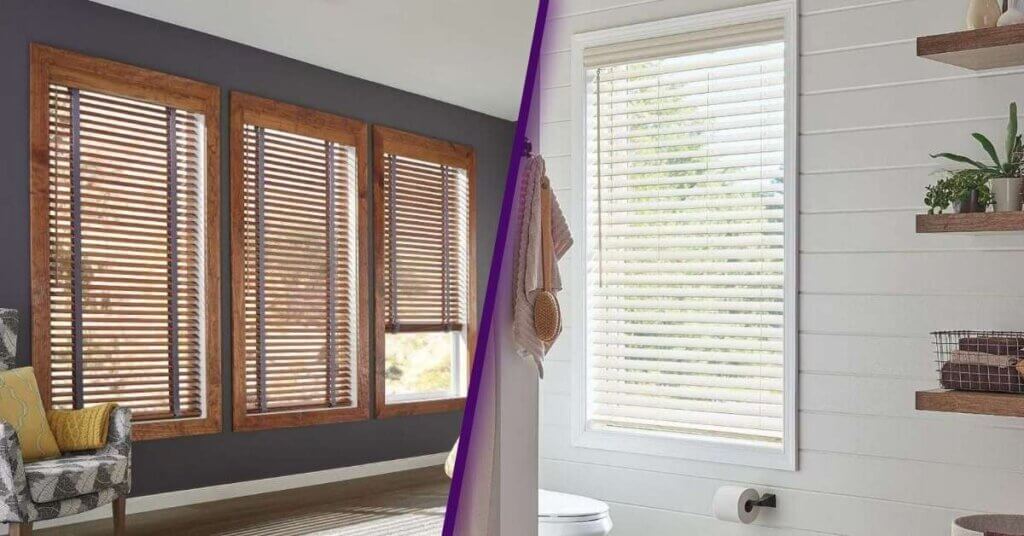When it comes to window treatments, homeowners often find themselves faced with a significant decision: wood vs. faux wood blinds. Both options offer timeless style and functional benefits, but the right choice depends on your space, budget, and lifestyle. This blog will break down how these two types of blinds compare in terms of appearance, durability, cost, and maintenance—helping you find the best match for your Arkansas home.
Whether you prefer the warmth of real wood or the practicality of faux, understanding their differences can make your decorating decisions easier. Continue reading to discover how these materials perform in Little Rock’s climate and what factors to consider before your next blind installation.
The Natural Beauty of Real Wood Blinds

Wood blinds are prized for their classic design and authentic warmth. Made from premium hardwoods like basswood or oak, they bring a rich, organic texture that complements both traditional and modern interiors. Their lightweight construction allows for smooth operation and a refined appearance that instantly adds value to your home.
However, natural wood isn’t ideal for every room. In areas with high humidity—like bathrooms, kitchens, or laundry rooms—moisture can cause warping or discoloration over time. For that reason, real wood blinds are best suited for living rooms, offices, and bedrooms, where they can shine without exposure to excess moisture.
The Practical Appeal of Faux Wood Blinds

Faux wood blinds are designed to mimic the look of real wood while offering superior resistance to moisture, heat, and fading. Made from PVC, vinyl, or composite materials, these blinds are highly durable and easy to clean, making them a smart choice for busy households.
They perform exceptionally well in humid conditions, making them ideal for bathrooms, kitchens, and laundry areas. Their low-maintenance surface wipes clean easily, and unlike real wood, they won’t crack or warp under temperature changes. For homeowners seeking the look of wood on a budget, faux wood blinds deliver style and strength without the premium cost.
Side-by-Side: Wood vs. Faux Wood Blinds
Feature | Real Wood Blinds | Faux Wood Blinds |
Material | Natural hardwood | PVC, vinyl, or composite |
Durability | Moderate; can warp with moisture | High; moisture-resistant and long-lasting |
Cost | More expensive | More affordable |
Maintenance | Requires gentle dusting or dry cleaning | Easy to wipe clean |
Best For | Living rooms, bedrooms, offices | Kitchens, bathrooms, humid areas |
Cost and Value Considerations
In the debate between wood and faux wood blinds, price often becomes the deciding factor. Real wood blinds are considered a premium investment, offering unmatched natural beauty and an upscale feel that enhances resale value. Meanwhile, faux wood blinds deliver budget-friendly appeal without sacrificing design versatility.
For families furnishing multiple rooms, faux wood blinds provide an excellent balance of aesthetics and affordability. Many homeowners even mix both types throughout the house—using real wood for shared spaces and faux wood for moisture-prone areas—to achieve both style and practicality.
Design Versatility and Aesthetic Appeal
From classic to modern interiors, both types of blinds blend seamlessly into a variety of design schemes. Real wood blinds offer a unique, grain-rich finish that pairs well with rustic, transitional, or farmhouse-inspired décors. Faux wood blinds, on the other hand, are available in a wide range of colors and finishes, including realistic wood grain patterns that closely resemble the real thing.
Because faux materials are man-made, they provide consistent color tones across large window sets, making them ideal for homes with multiple windows in a single room. Whether you prefer a warm, natural finish or a crisp, modern white look, both options can be customized to complement your home’s personality.
Maintenance and Longevity
From classic to modern interiors, both types of blinds blend seamlessly into a variety of design schemes. Real wood blinds offer a unique, grain-rich finish that pairs well with rustic, transitional, or farmhouse-inspired décors. Faux wood blinds, on the other hand, are available in a wide range of colors and finishes, including realistic wood grain patterns that closely resemble the real thing.
Because faux materials are man-made, they provide consistent color tones across large window sets, making them ideal for homes with multiple windows in a single room. Whether you prefer a warm, natural finish or a crisp, modern white look, both options can be customized to complement your home’s personality.
Environmental and Energy Efficiency
Both options offer excellent light control and privacy, but there are slight differences in energy efficiency. Real wood has natural insulating properties, helping to regulate indoor temperatures by keeping heat out in the summer and retaining warmth in the winter. Faux wood blinds, made from synthetic materials, still provide decent insulation but are slightly less effective at retaining energy.
That said, faux wood blinds can contribute to energy savings when properly installed, especially when combined with other window treatments, such as draperies or valances, for added insulation.
Key Insights
- Real wood blinds offer natural warmth, elegance, and a premium look ideal for formal living spaces.
- Faux wood blinds excel in terms of moisture resistance, durability, and affordability—making them a great choice for kitchens and bathrooms.
- Both types offer strong privacy and light control for a comfortable living experience.
- Faux wood requires less maintenance and maintains its color and shape consistently over time.
- Combining both styles in different rooms allows you to enjoy the best of both worlds in terms of design and practicality.
FAQs About Wood vs. Faux Wood Blinds
Q1. Which type lasts longer—wood or faux wood blinds?
Faux wood blinds generally last longer because they resist moisture, warping, and cracking. Real wood blinds are durable but can deteriorate more quickly in humid or sunny environments if not properly maintained. With regular care, both can provide years of reliable performance.
Q2. Are faux wood blinds a good choice for large windows?
Yes. Faux wood blinds are heavier and more stable, making them ideal for large windows where durability is a top priority. Their consistent design and affordability make them a practical choice for bigger spaces or open layouts.
Q3. Do wood blinds offer better insulation than faux wood blinds?
Real wood blinds offer slightly better insulation due to the natural insulating qualities of wood. They help maintain indoor comfort by minimizing heat transfer. Faux wood blinds still provide adequate energy efficiency, especially when paired with other insulating treatments.
Ready to Find the Perfect Blinds for Your Home?
If you’re still torn between wood vs. faux wood blinds, let the experts at Made in the Shade Little Rock help. We offer professional guidance, precise measuring, and expert installation for homes across Little Rock, Sherwood, Maumelle, Benton, Bryant, Little Rock Air Force Base, North Little Rock, and Cammack Village.
Book your free in-home consultation today and see how the right blinds can bring timeless beauty, comfort, and value to your windows.



